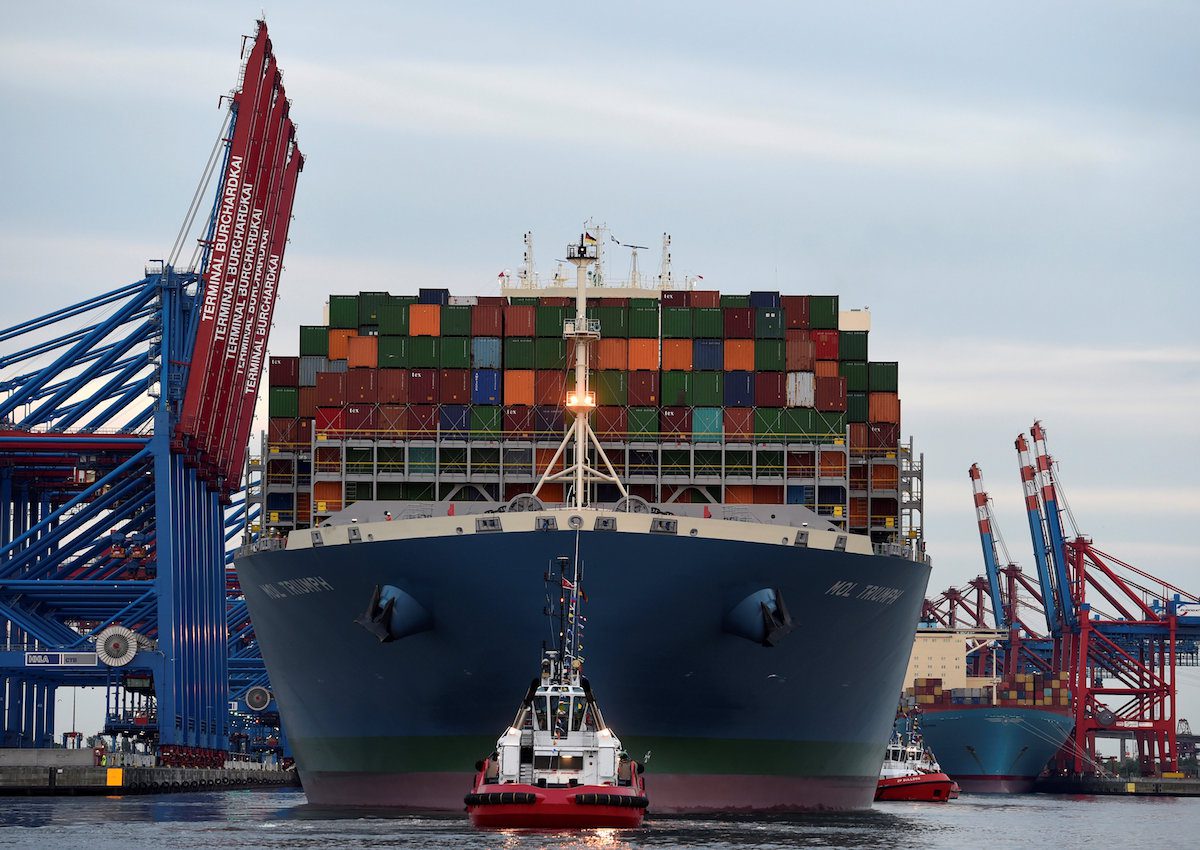File Photo: The ULCV Mol Triumph, one of the world’s biggest containersships, pictured at a container terminal in Hamburg, Germany, May 15, 2017. REUTERS/Fabian Bimmer
By Gavin van Marle in Amsterdam (The Loadstar) – Major container ports could be facing an investment crisis that will dwarf the problems seen in liner shipping over the last few years.
Speaking at the TOC Europe Container Supply Chain event in Amsterdam today, Lars Jensen, partner and chief executive of liner analyst SeaIntelligence Consulting, warned that with the large number of 18,000-21,000 teu ultra large container vessels (ULCVs) entering the global shipping fleet, the only way operators at hub ports would be able to compete was to embark on major investment projects, but with little guarantee of a return on investment.
“I’m afraid that some of the terminals will suffer catastrophic economic failure over the next few years,” he said, explaining that ports are vulnerable to the ongoing consolidation amongst carriers, which he said would continue beyond today’s level of concentration.
“In 2025 we are going to face a market where there are only six to eight global carriers left, and at the same time there is likely to be a large reduction in the number of regional niche carriers.
“I think in a few years there will be a discussion about how all these ULCVs simply were not needed. As a result of cascading all trades are seeing larger ships, which means if the volumes are not there to fill those vessels, there will be less and less services in terms of frequency – but the problem is what is required in terms of port investment; and if you think the lines have had it bad over the last five years, watch what happens to the ports over the next 10,” he said.
Mr Jensen argued that every region will likely reduce the number of ports to just a few larger transhipment hubs.
“This is where you are going to see fantastic competition between hub ports – the net result is that some ports will have the ability to handle large numbers of teus but won’t have a single customer.
“The lines have bought 100 ULCVs – that’s a $15bn investment and means the ports are going to find themselves locked into a game they really won’t like, and it will be similar to the game the lines found themselves in: once one or two lines ordered big ships, they all had to, and that meant they all lost because it created so much over capacity.
“The ports now face the same thing – they have to invest in facilities that are able to handle multiple ULCVs for multiple strings , and they have to make these investments just to have a seat at the table.”
Olaf Merk, ports and shipping administrator of the OECD’s International Transport Forum, said the liner shipping market increasingly resembled a monopsony and could lead to greater pressure on revenues. “If ports have less customers, what those customers individually bring to ports will be larger volumes, which means they will have larger rebates.
“Every consolidation of carriers means the re-negotiation with terminals starts at the level of the lowest tariffs. Meanwhile, carriers play out ports and terminals against each other with the threat of shifting ports and demanding lower rates, and more infrastructure not to carry out those threats.”
And he said this would ultimately have an affect on shippers. “There is decline in smaller ports, Amsterdam left the deepsea market, and so have many of the terminals in Zeebrugge – this leaves less choice for shippers and less resilient supply chains.”
However, Neil Davidson, senior ports analyst at Drewry, reminded delegates that the ports business is currently highly profitable, with almost every major port company reporting double digit EBITDA margins.
The Loadstar is fast becoming known at the highest levels of logistics and supply chain management as one of the best sources of influential analysis and commentary.
Check them out at TheLoadstar.co.uk, or find them on Facebook and Twitter.

 Join The Club
Join The Club











